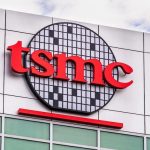Brett Brownlee’s entrepreneurial streak started simply: as a kid, for kid reasons, with his brother. “Growing up, he and I just used to push mowers around our parents’ subdivision to try to save up money to buy basketball shoes,” he says. The venture looks a bit different these days. Brownlee makes a living running Archway Lawn Care in the St. Louis area. The company brings in millions of dollars in revenue each year and employs around 50 people during peak season.
That isn’t to say things have always been easy. Archway’s staffing has been a bit of a revolving door, with many employees working there for a year or less. “At times like now where it seems everyone’s hiring,” says Brownlee, “we don’t get very many, if any, applicants at all.”
To bridge the labor gap, Archway relies on temporary seasonal workers from abroad. In 2023, it employed 29 of them. But that visa program is so dysfunctional, Brownlee says, that it puts him on a “rollercoaster of emotions every year.” Small business owners who use the program have to deal with workers arriving too late in the season, workers leaving too early, or even receiving no workers at all.
There’s “no certainty whatsoever” for employers, he continues. “We rack our brain every day on why we keep doing it because it’s frustrating, to say the least.”
Archway is one of many American small businesses that can’t find enough willing native-born workers and needs foreign laborers to get the job done. The federal government doesn’t make it easy for them, artificially capping the number of seasonal workers who can come to the U.S. each year. That barrier means it’s often easier for workers to enter the country and gain employment illegally.
COVID-era government policies have created lingering problems for American small businesses. Lockdowns caused abnormally high numbers of businesses to close for good. To make matters worse, in June 2020 former President Donald Trump went so far as to ban the temporary seasonal workers that businesses like Archway need, saying they “present a risk to the U.S. labor market.” As of February, there were 9.5 million job openings in the U.S. but only 6.5 million unemployed workers, per the U.S. Chamber of Commerce.
Labor shortages and policies that keep out foreign workers are connected. But America’s main pathway for temporary seasonal workers is broken in ways that predate the Trump administration and the pandemic, and in ways that kneecap the businesses that provide beloved goods and services. From Maryland crabbers to Colorado ski resorts, American businesses depend on a regular stream of helpers from abroad. Yet the businesses that want to do things “the right way” often realize that means going without workers, forgoing growth opportunities, and failing to reach their potential.
‘Half Your Team Is Injured’
The old saying that immigrants work the jobs that Americans don’t want is generally true—but it’s especially true in the context of seasonal employment. “Finding labor to work [the] seasonality of our business has been challenging,” says Christian Sain, director of golf and grounds management for the Richmond-based Country Club of Virginia. “This is where the H-2B program has been something that fits our industry well, fits our golf course well.”
The H-2B visa is a pathway that exists to bring temporary, nonimmigrant, nonagricultural workers to American businesses. The landscaping industry employs the most H-2B workers, but seasonal laborers also find work at carnivals and amusement parks, fisheries, restaurants, resorts, and more. Most H-2B workers come from Latin America, but Jamaica, the Philippines, South Africa, Serbia, and Ukraine also sent thousands of laborers in FY 2022. Their contributions keep outdoor spaces beautiful, ensure that popular seasonal institutions operate smoothly, and allow small businesses to keep providing the goods and services that consumers rely on.
Small business job openings have finally fallen to pre-pandemic levels, according to a March National Federation of Independent Business survey—but 86 percent of small business owners “hiring or trying to hire” reported “few or no qualified” applicants nonetheless. There were more than a million open jobs in construction and manufacturing and over 1.1 million open jobs in leisure and hospitality as of February, according to the U.S. Bureau of Labor Statistics.
The H-2B visa program ideally could help solve these problems. But in its current form, it can’t reliably get willing workers to employers when they’re needed and it can’t respond to the forces of supply and demand. It’s also horribly complex, boasting over 175 rules that regulate everything from recruitment to wages.
The government issues H-2B visas in two rounds: one starting in October and the other in April. “About 150 days before the job start date,” wrote David J. Bier, director of immigration studies at the Cato Institute, in a 2021 Cato paper, an employer must “submit a prevailing wage determination” to the Department of Labor. (This is the minimum wage for H-2B workers, and as of 2020, the hourly average was $14.09.) American employers must file a temporary labor certification, which “determine[s] whether or not there are sufficient qualified U.S. workers who will be available and that any employment of H-2B workers will not ‘adversely affect’ the wages and working conditions of similarly employed American workers,” Bier continued. Employers are placed into groups based on their filing order.
That order has a huge impact on when a business receives its workers—and whether it gets them at all. Lucky filers land in Group A, which the Department of Labor adjudicates first. This year, the Country Club of Virginia is in Group F—the second-to-last group—which means “we have no chance of getting our workers at all,” says Sain. “Right now, we’re just falling behind because we don’t have our workers….It’s like being on a team and half your team is injured.”
Workers often arrive too late in the season, explains Andrew Bray, senior vice president of government relations and membership at the National Association of Landscape Professionals. “That’s always what the issue is,” says Bray. Landscaping companies are “signing these contracts sometimes with liquidated damages provisions and they’re not sure if they’re even going to have their workers.”
“We have 29 H-2B guys that are all getting ready to go home in the next three weeks or so,” per the visa program’s rules, Brownlee said in early November. “But I have probably six weeks’ to eight weeks’ worth of work left still to do that’s already been sold with my labor here….Now I have to go back to my customers and tell them, ‘Sorry, our labor force had to go home, and I can’t find enough guys locally, and now we have to wait until spring.'”
Even though 2023 was a record year for Archway and the business got all the H-2B workers it applied for, Brownlee says, “We’re not going to go out and buy a bunch of new equipment or new trucks or anything like that for next year, because we don’t know if we’re going to get these same guys back next year or not.” That’s money that won’t reach other businesses and keep the economy moving.
The government knows there’s huge demand for the program. In 2022, the Department of Labor approved about 210,000 petitions by employers for H-2B workers, Bray says. “But we have this cap that doesn’t reflect the actual demand.” Only 66,000 H-2B visas are granted every year—a limit that hasn’t changed since it was established in 1990. In other words, the government acknowledges a need for H-2B visas that is far greater than the number of visas that regulations allow to be issued each year.
Because the visas are distributed via a randomized lottery, many employers who apply for workers simply lose out. The lottery “selects entire petitions—which include all the workers that an individual employer is seeking—rather than selecting individual beneficiaries from each petition,” wrote Bier, so “employers either receive all their workers or none.”
On top of that, the program is very expensive for the businesses that use it. The Seasonal Employment Alliance, an H-2B advocacy group, estimated that employers spend between $1,500 and $3,000 for each H-2B worker they bring in. Administrative costs tend to add an extra $1 to $3 to the hourly wage employers are mandated to pay H-2B workers, “bringing the real cost of employing H-2B workers well above what it would cost to hire US workers.”
Thanks to all these mandates and regulations, it would be far easier for a small business to hire undocumented immigrants than laborers on work visas. “I’ve had more illegal immigrants or people without papers try to get jobs with us than any local help,” says Brownlee. “Having to turn them away, it’s frustrating, because we’ve spent over a decade using the H-2B program, doing everything in our power to keep a legal work force, and I’ve got people that are willing to work that don’t have papers and I have to tell them ‘no.'”
“It kind of puts companies like us between a rock and a hard spot of trying to keep a legal work force and stay competitive,” he adds.
‘A Risk to the U.S. Labor Market’
One of the most visible roadblocks to a better visa pathway consists of politicians who otherwise claim to champion the interests of small businesses and American workers.
As an ostensibly COVID-related measure in April 2020, Trump issued an executive order suspending green cards for certain immigrants whose entry he argued would be economically “detrimental to the interests of the United States.” At the time, due in part to opposition from business groups, he didn’t touch temporary visas for seasonal workers, farm workers, and other foreigners.
But a month later, with the U.S. economy still in shambles, Sens. Tom Cotton (R–Ark.), Ted Cruz (R–Texas), Josh Hawley (R–Mo.), and Chuck Grassley (R–Iowa) urged Trump to suspend many of those visas for up to a year “or until unemployment has returned to normal levels.” The country’s “guest worker programs,” including the H-2B visa, “remain a serious threat to the U.S. labor market’s recovery,” argued the senators. “There is no reason why” young people “should not have access to seasonal, nonagricultural work…before those positions are given to imported foreign labor under the H-2B program,” they continued.
Trump granted their wish in an executive order one month later. A Department of Labor and Department of Homeland Security review of nonimmigrant visa programs, Trump’s order explained, found that “the present admission of workers within several…categories also poses a risk of displacing and disadvantaging United States workers during the current recovery.” He barred the entry of certain nonimmigrant workers—including H-2B visa holders—through the end of 2020. Trump would later extend the order, with President Joe Biden rescinding it in February 2021. (Trump, it should be said, has employed hundreds of H-2B workers at his golf clubs and resorts over the years.)
Opponents of these work visa programs often hold the common yet mistaken view that foreign workers displace American ones. But after Trump banned H-2B workers, Bier noted that “government data show that almost no U.S. workers applied for H-2B jobs, despite the spike in unemployment.” Brownlee explains that the extra revenue Archway gets thanks to its H-2B workers “allows us to pay [American workers] more to be supervisors and managers for these guys who are coming in on these seasonal visas.”
“It’s created opportunities for guys internally here that started with us literally 10 years ago making 10 bucks an hour that are now making anywhere from $50–70,000 a year,” he adds.
“Each H-2B worker actually supports 4.6 U.S. jobs,” says Bray. “That means a company that can hire more workers to make sure they can fulfill the positions within their own organization, that company can grow.”
The issues with H-2B visas and other nonimmigrant work programs don’t always come up in the political battles. They’re hidden within layers of the antiquated U.S. immigration system and all its artificial caps and bureaucratic bloat. “It doesn’t matter if it’s a Democratic administration or a Republican administration,” Brownlee says. “It’s been the same way for probably six or seven of the last 10 years.”
By design, the H-2B visa—and many other work visas, temporary or not—is not responsive to market forces. Visa caps all but guarantee that supply won’t match demand. The government also mandates that businesses try to recruit American workers before they can hire H-2B workers. “Even if U.S. workers reject the jobs, the law can still require the positions to go unfilled, thus harming employers and U.S. workers in complementary employment,” wrote Bier. Doing away with these barriers would mean removing layers of protectionism that stifle the U.S. economy.
Issuing more temporary work visas could also help reduce the number of unauthorized crossings at the U.S.-Mexico border. “The vast increase in the number of H-2 guest worker visas issued to Mexicans can explain a large percentage of the decrease in Mexican illegal immigrants,” wrote the Cato Institute’s Alex Nowrasteh and Andrew C. Forrester in 2019. “From 2000–2018, a 1 percent increase in the number of H-2 visas for Mexicans is associated with a 1.04 percent decline in the number of Mexicans apprehended on average.”
They concluded that it would be “simpler and cheaper to issue more H-2 visas than to hire more Border Patrol agents” to address unauthorized immigration. Instead, U.S. officials have chosen a path that encourages more chaos at the border and punishes Americans whose businesses can’t survive without foreign workers.
‘The Short End of the Stick’
Small businesses have seen relief here and there, but not the solutions they say they need.
“There’s been various increases in the past through one-year policy changes,” says Bray. The Department of Homeland Security announced in early November that it would do just that for FY 2024, releasing over 64,000 supplemental H-2B visas. But businesses that use the program are still waiting on a lasting solution, Bray notes: “We need a more permanent fix to the cap so it actually reflects demand.”
One fix that Brownlee wants is a returning worker exemption—an exemption to the annual cap for workers previously employed under the H-2B program. “Congress previously passed such an exemption for fiscal years 2005, 2006, 2007, and 2016,” wrote Bloomberg‘s Andrew Kreighbaum. Lawmakers tried to pass a returning worker measure in a Department of Homeland Security funding bill in September 2023, Kreighbaum reported at the time—but the provision was ultimately stripped from the final bill.
“It feels like every year we get all these rumors that there’s going to be a fix…and then during the spending bill negotiations, something has to get taken out at the eleventh hour and it’s always H-2B, and it’s always the returning worker exemption or the cap stuff,” Brownlee says. “‘We’ve got to keep things status quo, we don’t want to rock the boat.’ We always get left with the short end of the stick.”
H-2B visas bring workers where they’re needed, to the benefit of small businesses and both American and foreign workers. Along with other temporary work visas, they can help reduce the pressure of unauthorized migration along the U.S.-Mexico border. Despite its flaws, the H-2B program is essential for thousands of American businesses, especially small seasonal ones.
By failing to reform the pathway, policy makers are forcing businesses to forgo growth and provide service below their standards. “You feel like you’re pushing the stone up the hill constantly,” says Sain, “but you just never get it to the top.”
The post American Small Businesses Are Desperate for Foreign Workers appeared first on Reason.com.







